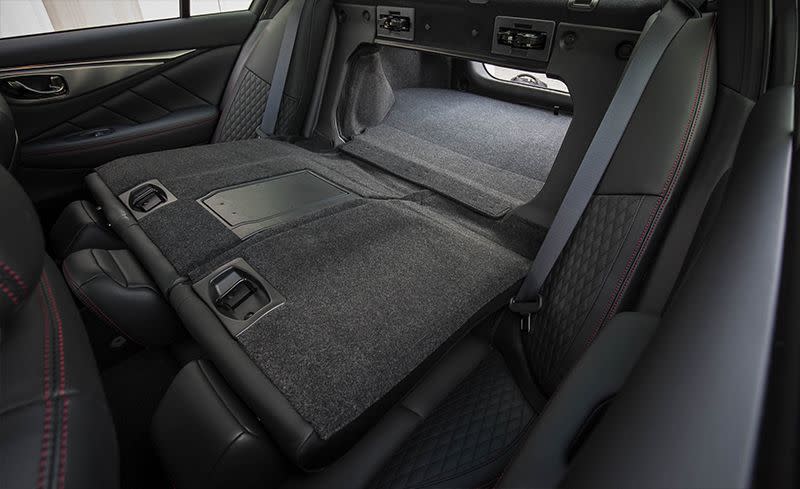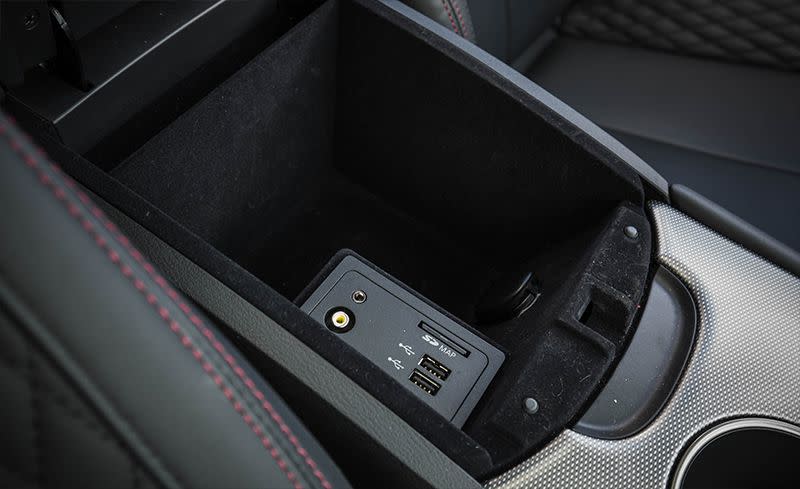Cargo Space and Storage

Cargo Space and Storage Rating:

The Q50 is about the same size as its competitors, but its cargo capacity is below average, and the interior is short on useful cubbies. It may be a comfortable highway cruiser, but the Q50 is not designed for long family trips.
With about 13 cubic feet of cargo space, the Q50 falls far short of the BMW 3-series and the liftback Kia Stinger. A folding rear seat is optional, not standard, and it’s not available at all in the base 2.0t Pure trim.
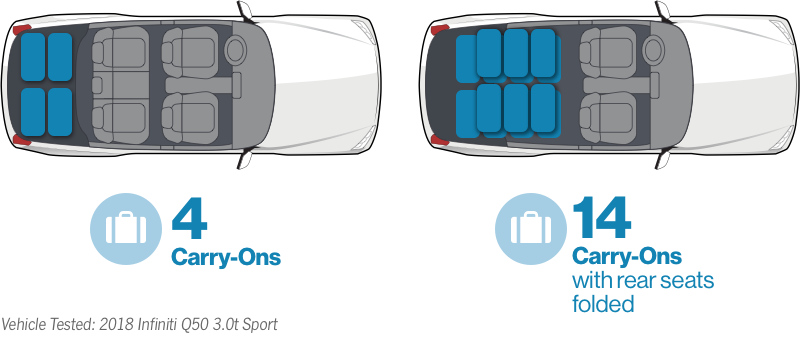
Test Results: Carry-On Luggage
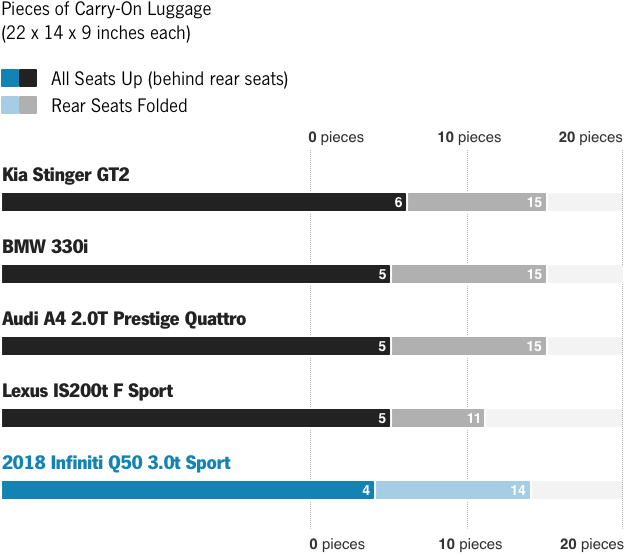
Cargo Configurations

Cargo Volume Comparisons
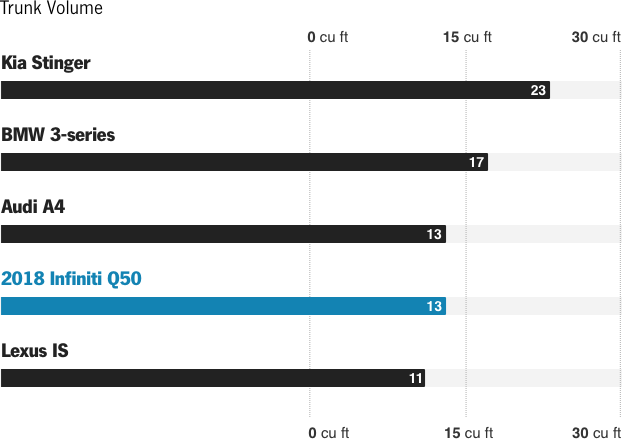
Lift-Over Height
The Q50’s lift-over height is normal for a car this size. Loading cargo into the trunk shouldn’t present a challenge.

Test Results: Lift-Over Height
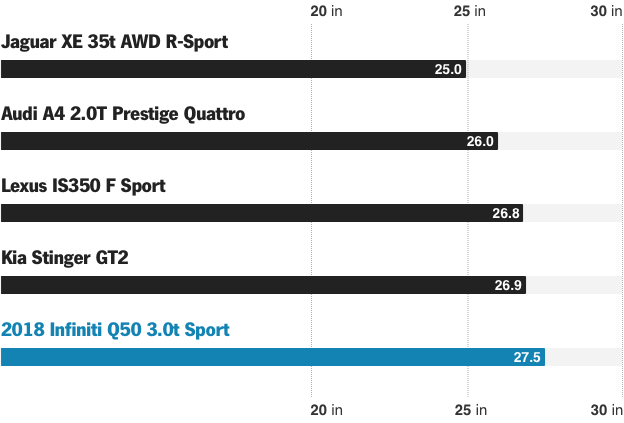
Interior Cubby Storage
There is enough cabin storage space in the Q50 to get by, but it seems clear that the center console and center stack were designed before cellphones and other devices were as important as they are today. There’s a lot of unused space in the center console, where other cars in this segment (notably the Audi A4 and Kia Stinger) have diverse and useful stowing solutions.
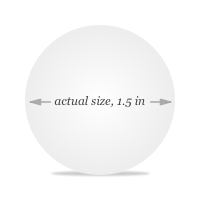
Why do we use ping-pong balls?
To determine the interior space available to stash travel essentials, we’ve devised a range of measuring protocols. We use six beverage containers ranging in size and shape to gauge cupholder accommodation. We stack, stuff, and arrange 9-by-14-by-22-inch cardboard boxes to quantify the number of airline-carry-on-size suitcases that will fit in a trunk or folded seat’s cargo space. To measure irregularly shaped gloveboxes, door pockets, and console bins, we fill each container with 1.5-inch-diameter ping-pong balls. It’s tempting to convert the number of spheres to a volume (cubic inches), but we resist that calculation because-as with the box of tissues, 12-ounce can of soda, or gallon of milk you might stash in these compartments-there are voids between the balls. Random packing (our procedure) nullifies approximately one-third of the available space. The negative space between the balls could theoretically be reduced to 25 percent of an irregular shape with precise stacking, but while we might be pedantic, we’re not crazy.

Test Results: Maximum Cubby Storage
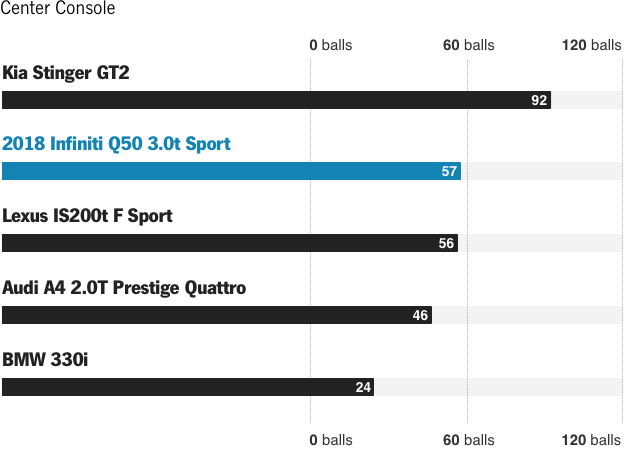
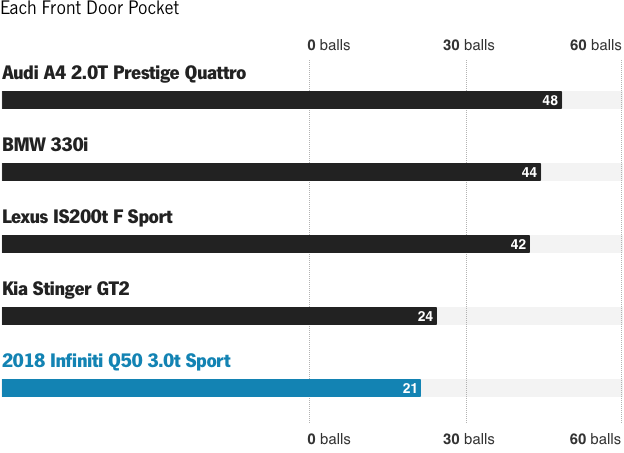
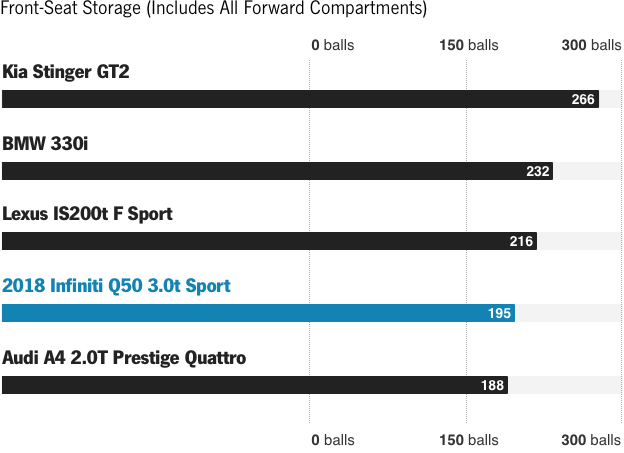
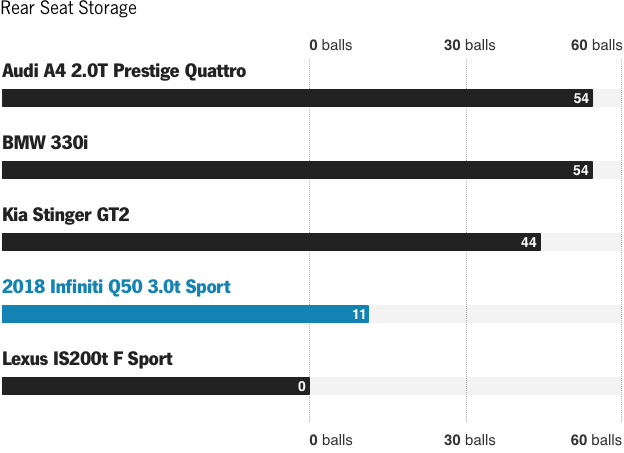
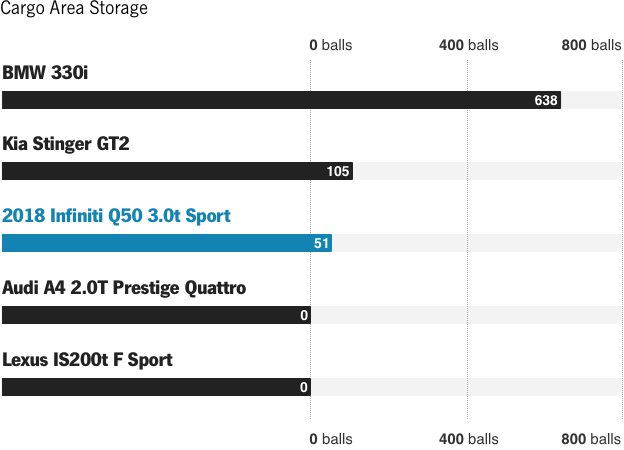
You Might Also Like

 Yahoo Autos
Yahoo Autos 